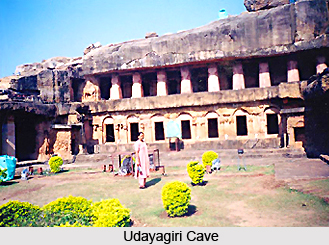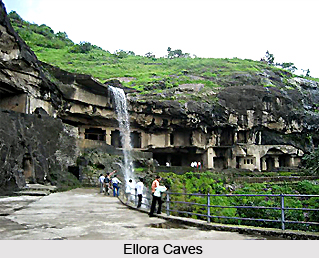 There are more than 1,500 known rock cut structures in India, out of which about 1000 were made by Buddhists, 300 by Hindus and 200 by Jains. Many of these structures contain works of art of global importance, and many later caves from the Mahayana period are adorned with exquisite stone carvings. These ancient and medieval structures represent significant achievements of structural engineering and craftsmanship.
There are more than 1,500 known rock cut structures in India, out of which about 1000 were made by Buddhists, 300 by Hindus and 200 by Jains. Many of these structures contain works of art of global importance, and many later caves from the Mahayana period are adorned with exquisite stone carvings. These ancient and medieval structures represent significant achievements of structural engineering and craftsmanship.History of Buddhist Cave Temples
Buddhist Cave Temples in India are rampant and bear the bygone flavours of Buddhism. The earliest Buddhist Cave Temples belong to the period of Ashoka, who is said to be the founder of Viharas or monasteries, stupas or dagobas, asylums and other religious charitable works. The cave temples belonging to the age of Ashoka are mostly situated in Nagarjuni and Barabar Hills in Bihar. Of these chambers, four are on the Barabar hill and three on the Nagarjuni hill.
Buddhist Cave Temples have been classified into two distinct groups, as these belong to two great dimension of the Buddhist faith. To the first group belong those cave temples, which were excavated, so far as can be judged from style and inscriptions before the Christian era or during the first century. These belong to the Hinayana sect, or "lesser vehicle", or the original form of Buddhism. The cave temples of the second period belong to the Mahayana Buddhism, or the "Great Vehicle". The caves belonging to this sect are much less numerous.
Architecture of Buddhist Cave Temples
The ancient temple and intricate sculptures of Karla caves are mesmerizing. Karla and Bhaja rock-cut caves, sited near Lonavala in Maharashtra, are perfect examples of Buddhist cave Architecture in India. The history of these caves dated back to 2nd century BC. The beautiful interiors and the intricate sculptures of humans, Buddha and animals are fascinating. Moreover, these caves are remarkably well-adapted to Indian seasons as these are cozy in winter and cool in summer. The best feature of these caves is that they have a hemispherical 'sun window' that sieves light towards Stupa or Dagoba sheltered by an engraved wooden umbrella.
 There is also a sculpture of Buddha seated on a lion-supported throne preaching his disciples. The sculpture also has splendid carvings of three elephants. Buddhist architecture consists of Rock cut caves, Viharas (Residential quarters for Monks), Stupas, Chaityas or Chaityagriha (assembly halls with a stupa), and Sangharamas (Buddhist monastery and school) etc.
There is also a sculpture of Buddha seated on a lion-supported throne preaching his disciples. The sculpture also has splendid carvings of three elephants. Buddhist architecture consists of Rock cut caves, Viharas (Residential quarters for Monks), Stupas, Chaityas or Chaityagriha (assembly halls with a stupa), and Sangharamas (Buddhist monastery and school) etc.Famous Buddhist Cave Temples
The earliest caves employed by humans were natural caves used by local inhabitants for a variety of purposes, such as shrines and shelters. Evidence suggests that the caves were first occupied and slightly altered during the Palaeolithic and Mesolithic periods, up to about 6000 BC.
Ajanta Caves: The Ajanta Caves are approximately 30 rock-cut Buddhist cave monuments which date from the 2nd century BCE to about 480 CE in Aurangabad district of Maharashtra. The caves include paintings and rock-cut sculptures described as among the finest surviving examples of ancient Indian art, particularly expressive paintings that present emotions through gesture, pose and form.
For more, visit the link below: